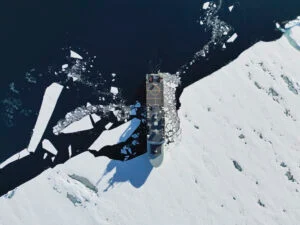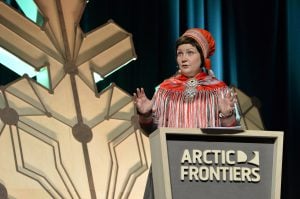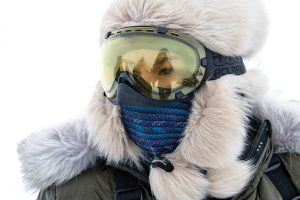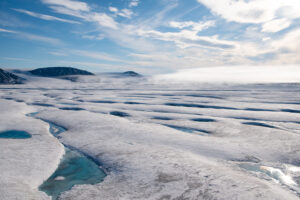
People & Culture
On thin ice: Who “owns” the Arctic?
As the climate heats up, so do talks over land ownership in the Arctic. What does Canadian Arctic Sovereignty look like as the ice melts?
- 4353 words
- 18 minutes
This article is over 5 years old and may contain outdated information.
Science & Tech

A ship frozen into the Arctic sea ice sounds like an 19th-century expedition gone wrong, but for one team of scientists, it will serve as a platform for crucial climate change research.
Announced at the Arctic Science Summit Week in March 2016, the Multidisciplinary drifting Observatory for the Study of Arctic Climate (MOSAiC) is an international research program to better understand the energy exchange between the ice, ocean and atmosphere and develop more accurate methods of forecasting and climate prediction. The proposed 96-person crew, comprised of approximately 40 scientific or technical participants, will spend 13 to 14 months observing an annual cycle of Arctic sea ice aboard the Polarsterm Icebreaker, a research vessel provided by the Alfred Wegener Institute.
The crew will include scientists from different disciplines and countries, including members of a University of Manitoba-based research team led by David Barber, Canada’s Research Chair in Arctic System Science. Barber’s team, which has led similar projects twice before, will study the impacts of high frequency events, such as storms, in the region from winter to summer.
“This project gives us an opportunity to look at the kind of processes that are occurring with the change in climate during the winter, which is the unique part of MOSAiC,” says Barber. “We have programs all over the Arctic all the time, but we primarily focus on the shoulder seasons, the spring and the fall. [MOSAiC] gives our team the opportunity to overwinter again.”
The project is currently in the process of securing necessary funding, but is scheduled to set sail in the fall of 2019 and follow the sea ice drift from the East Siberian Sea off the northern coast of Russia and towards the North Pole and on to Fram Strait, between Greenland and Svalbard.
Are you passionate about Canadian geography?
You can support Canadian Geographic in 3 ways:

People & Culture
As the climate heats up, so do talks over land ownership in the Arctic. What does Canadian Arctic Sovereignty look like as the ice melts?

Environment
The uncertainty and change that's currently disrupting the region dominated the annual meeting's agenda

Science & Tech
The Canadian High Arctic Research Station is set to open in Cambridge Bay, Nunavut, later this year. How will it affect our understanding and appreciation of the North and the rapid change occurring there?

Environment
What the collapse of the Milne ice shelf and the loss of a rare Arctic ecosystem might teach us about a changing planet